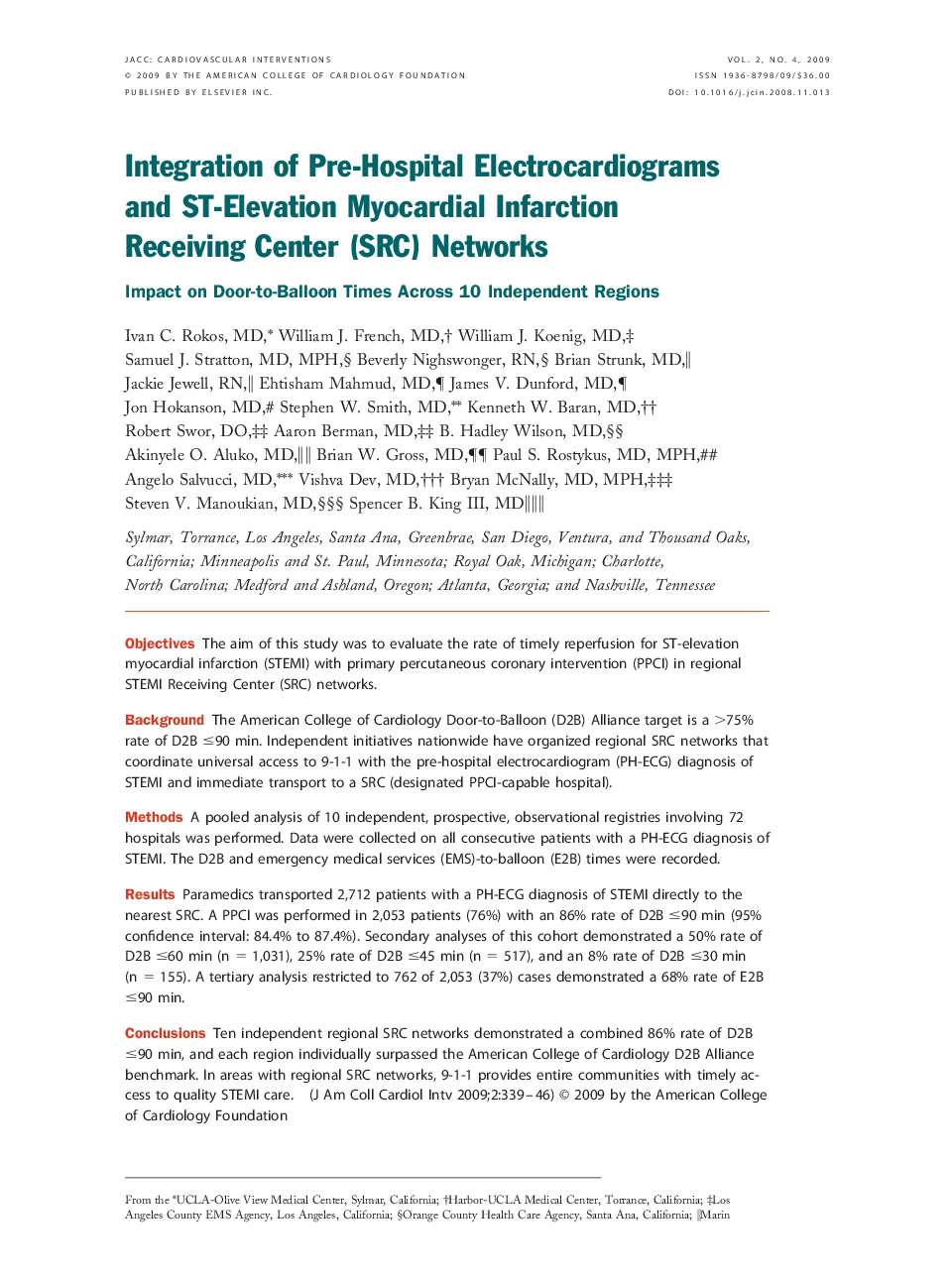| Article ID | Journal | Published Year | Pages | File Type |
|---|---|---|---|---|
| 2941638 | JACC: Cardiovascular Interventions | 2009 | 8 Pages |
ObjectivesThe aim of this study was to evaluate the rate of timely reperfusion for ST-elevation myocardial infarction (STEMI) with primary percutaneous coronary intervention (PPCI) in regional STEMI Receiving Center (SRC) networks.BackgroundThe American College of Cardiology Door-to-Balloon (D2B) Alliance target is a >75% rate of D2B ≤90 min. Independent initiatives nationwide have organized regional SRC networks that coordinate universal access to 9-1-1 with the pre-hospital electrocardiogram (PH-ECG) diagnosis of STEMI and immediate transport to a SRC (designated PPCI-capable hospital).MethodsA pooled analysis of 10 independent, prospective, observational registries involving 72 hospitals was performed. Data were collected on all consecutive patients with a PH-ECG diagnosis of STEMI. The D2B and emergency medical services (EMS)-to-balloon (E2B) times were recorded.ResultsParamedics transported 2,712 patients with a PH-ECG diagnosis of STEMI directly to the nearest SRC. A PPCI was performed in 2,053 patients (76%) with an 86% rate of D2B ≤90 min (95% confidence interval: 84.4% to 87.4%). Secondary analyses of this cohort demonstrated a 50% rate of D2B ≤60 min (n = 1,031), 25% rate of D2B ≤45 min (n = 517), and an 8% rate of D2B ≤30 min (n = 155). A tertiary analysis restricted to 762 of 2,053 (37%) cases demonstrated a 68% rate of E2B ≤90 min.ConclusionsTen independent regional SRC networks demonstrated a combined 86% rate of D2B ≤90 min, and each region individually surpassed the American College of Cardiology D2B Alliance benchmark. In areas with regional SRC networks, 9-1-1 provides entire communities with timely access to quality STEMI care.
